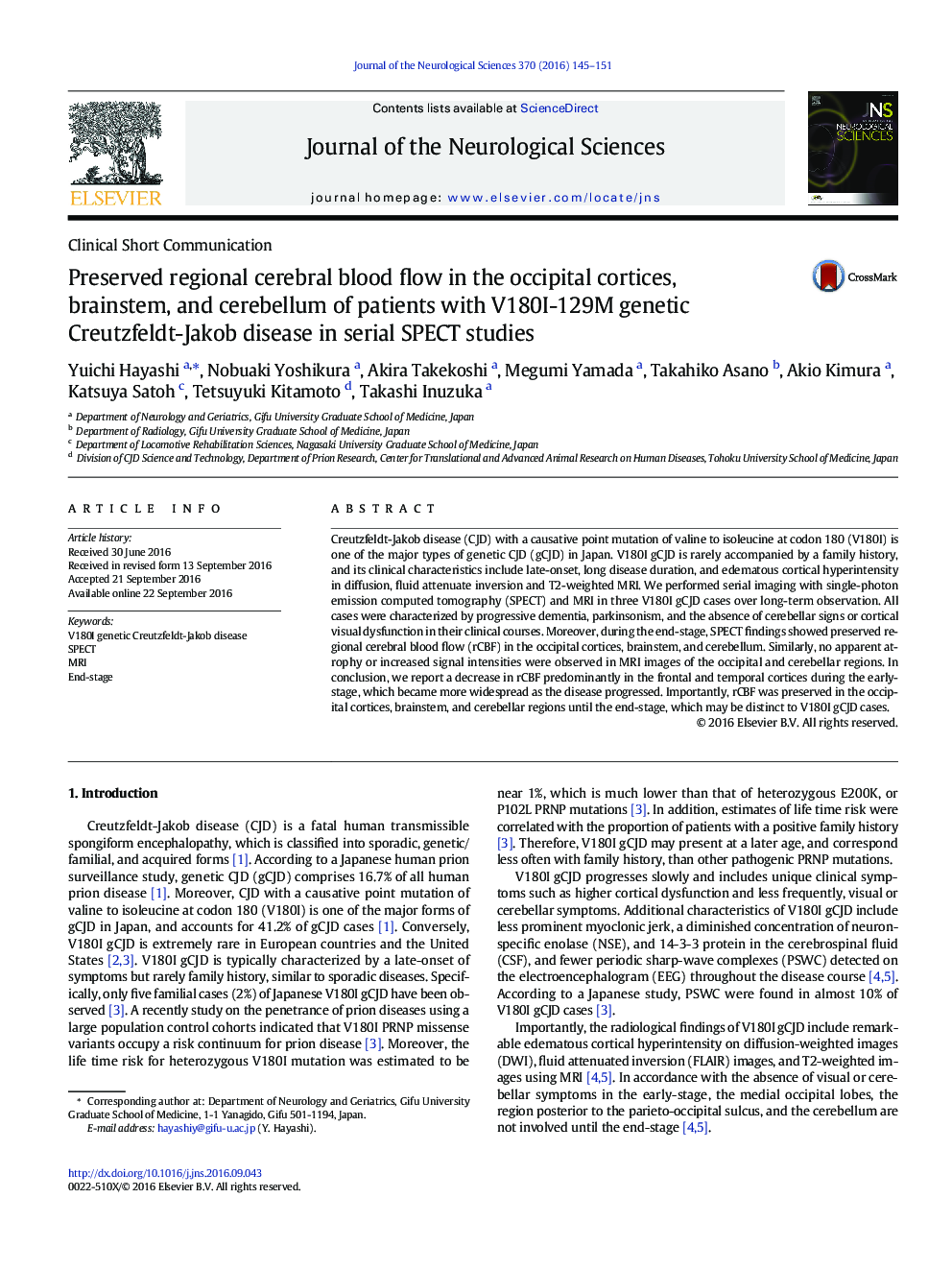| Article ID | Journal | Published Year | Pages | File Type |
|---|---|---|---|---|
| 5503152 | Journal of the Neurological Sciences | 2016 | 7 Pages |
Abstract
Creutzfeldt-Jakob disease (CJD) with a causative point mutation of valine to isoleucine at codon 180 (V180I) is one of the major types of genetic CJD (gCJD) in Japan. V180I gCJD is rarely accompanied by a family history, and its clinical characteristics include late-onset, long disease duration, and edematous cortical hyperintensity in diffusion, fluid attenuate inversion and T2-weighted MRI. We performed serial imaging with single-photon emission computed tomography (SPECT) and MRI in three V180I gCJD cases over long-term observation. All cases were characterized by progressive dementia, parkinsonism, and the absence of cerebellar signs or cortical visual dysfunction in their clinical courses. Moreover, during the end-stage, SPECT findings showed preserved regional cerebral blood flow (rCBF) in the occipital cortices, brainstem, and cerebellum. Similarly, no apparent atrophy or increased signal intensities were observed in MRI images of the occipital and cerebellar regions. In conclusion, we report a decrease in rCBF predominantly in the frontal and temporal cortices during the early-stage, which became more widespread as the disease progressed. Importantly, rCBF was preserved in the occipital cortices, brainstem, and cerebellar regions until the end-stage, which may be distinct to V180I gCJD cases.
Related Topics
Life Sciences
Biochemistry, Genetics and Molecular Biology
Ageing
Authors
Yuichi Hayashi, Nobuaki Yoshikura, Akira Takekoshi, Megumi Yamada, Takahiko Asano, Akio Kimura, Katsuya Satoh, Tetsuyuki Kitamoto, Takashi Inuzuka,
